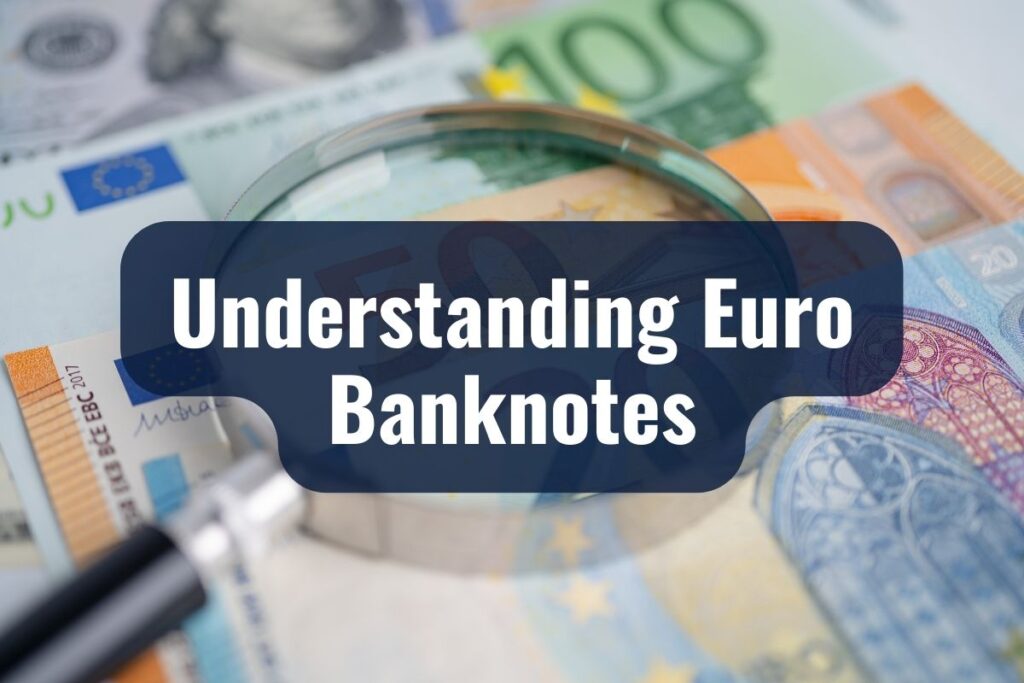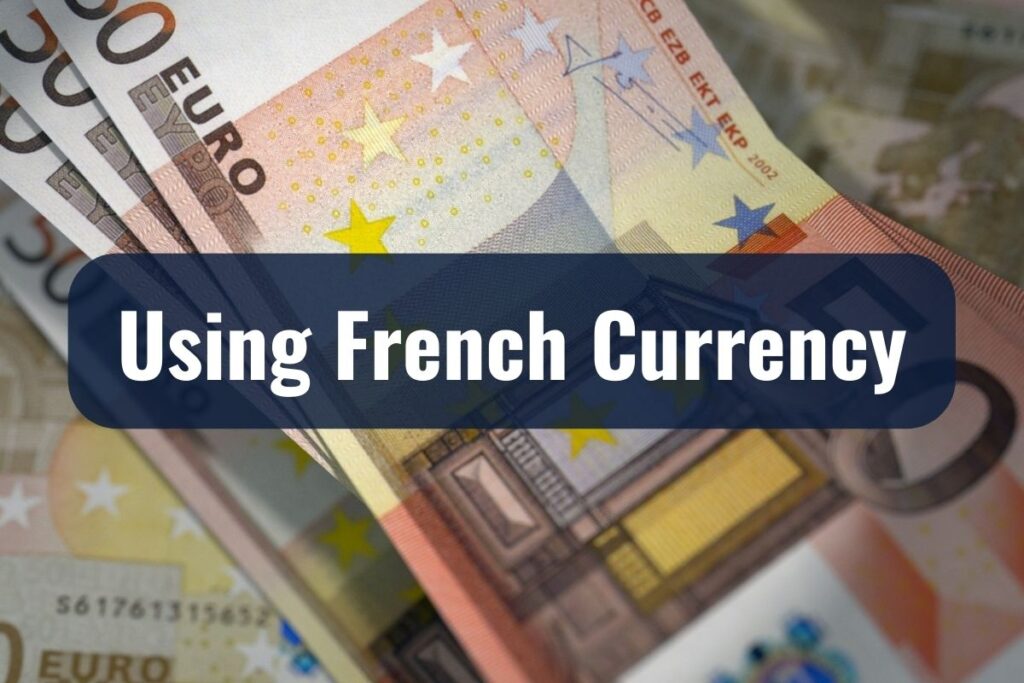The story of French currency is as rich and diverse as the nation’s history. Before the Euro, the French Franc was the national currency, with its roots tracing back to the 14th century. Over the years, the Franc saw various iterations influenced by significant events such as the French Revolution and the two World Wars.
For newcomers to France, understanding the currency is more than just about money—it’s a gateway to embracing the French lifestyle. Whether you’re dining at a local bistro, shopping at quaint boutiques, or even just taking public transport, a firm grasp of the currency can make these experiences smooth and enjoyable. Furthermore, it ensures that you are financially prepared and can navigate potential challenges without a hitch.
KEY TAKEAWAYS
- France adopted the Euro in 2002, abandoning the French Franc to facilitate unified economic progress in the EU.
- Euro banknotes range from €5 to €500, each varying in color and size and featuring significant architectural styles from different periods.
- Each French Euro coin represents unique national symbols and values, from Marianne to the sower and the tree, representing different aspects of French culture and history.
- Various payment methods, from cash to cards and mobile payments, are available and widely accepted in France, each suitable for different needs and preferences.
The Euro: France’s Current Currency
Introduction to the Euro
The Euro, symbolized as €, is the official currency of the Eurozone, which consists of 19 out of the 27 European Union (EU) member states, including France. The introduction of the Euro in 1999 marked a significant step towards European integration. While electronic transactions began using the Euro from the outset, it wasn’t until 2002 that the physical banknotes and coins came into circulation, replacing the national currencies of the participating countries.
Notes and Coins Denomination
The Euro system is straightforward and easy to understand, particularly for those accustomed to decimal systems.
Banknotes: Euro banknotes come in seven different denominations:
- €5
- €10
- €20
- €50
- €100
- €200
- €500
Each note varies in size and color, making it easier to distinguish between them. They also feature architectural designs from various periods in Europe’s history but don’t represent any existing monuments or buildings in particular.
Coins: Euro coins are available in eight denominations:
- 1 cent
- 2 cents
- 5 cents
- 10 cents
- 20 cents
- 50 cents
- €1
- €2
What’s particularly interesting about the Euro coins is that one side (known as the ‘national’ side) has a design specific to the issuing country. In the case of France, this includes designs that showcase symbols like the sower, a familiar motif in French coinage, and Marianne, a symbol of the French Republic. The other side, known as the ‘common’ side, displays a map of the European Union.
Understanding Euro Banknotes

For newcomers in France, it’s beneficial to recognize and differentiate between these banknotes, ensuring smooth transactions and preventing potential fraud.
Different Denominations and Their Distinct Features
€5 Note:
- Color: Grey
- Size: 120 x 62 mm
- Design Element: Classical architecture
€10 Note:
- Color: Red
- Size: 127 x 67 mm
- Design Element: Romanesque architecture
€20 Note:
- Color: Blue
- Size: 133 x 72 mm
- Design Element: Gothic architecture
€50 Note:
- Color: Orange
- Size: 140 x 77 mm
- Design Element: Renaissance architecture
€100 Note:
- Color: Green
- Size: 147 x 82 mm
- Design Element: Baroque and Rococo architecture
€200 Note:
- Color: Yellow-brown
- Size: 153 x 82 mm
- Design Element: 19th-century iron and glass architecture
€500 Note:
- Color: Purple
- Size: 160 x 82 mm
- Design Element: Modern 20th-century architecture
Tips for Recognizing Genuine Banknotes
With any popular currency, there’s always a risk of counterfeit notes circulating. Here are some guidelines to ensure you’re dealing with genuine Euro banknotes:
- Feel: Genuine Euro banknotes have a unique texture. Raised print can be felt in the main image, the lettering, and the large value numeral.
- Look: When you hold the note against the light, the security thread and watermark will appear.
- Tilt: On higher value notes (€50 and above), when you tilt the banknote, the number displaying the value changes color from purple to olive green or brown. Additionally, a shiny number will appear in the hologram or in the satellite holograms.
For those who want an extra layer of security, ultraviolet (UV) lights and infrared (IR) devices are available in the market that can further help verify the authenticity of a note.
Related: Pension in France explained
French Euro Coins
While the Euro banknotes are standardized across the Eurozone, the coins bear a national side that reflects the identity and culture of each member state. For France, these designs hold significant symbolism and narrate tales of its history and values.
Unique French Designs
Each French Euro coin’s national side tells a story, often highlighting historical events, figures, or symbols significant to France.
| Denomination | Design Symbol | Represents | Description |
| 1, 2, 5 cents | Marianne | Liberty, Equality, Fraternity | Iconic embodiment of the French Republic. |
| 10, 20, 50 cents | The Sower | Agricultural Heritage | A symbol of France’s rich agricultural legacy and continuity. |
| €1, €2 | Tree in a Hexagon | Life, Continuity, Growth | Represents France as a nation between earth and sky and its role in Europe. |
Difference between National and Common Sides
Euro coins are unique in their two-sided designs:
- National side: This side varies from one country to another within the Eurozone. For France, as described above, you will see designs of Marianne, the sower, or the tree.
- Common side: This side is consistent across all Euro coins, regardless of the country of origin. The designs here depict maps of Europe, ranging from the entire continent to individual member states, depending on the coin’s denomination.
Using French Currency

Navigating the financial landscape of a new country can often seem daunting. However, using currency in France, once you’re familiar with the basics, is straightforward and user-friendly. From traditional cash transactions to the burgeoning trend of digital payments, France offers a plethora of options to fit everyone’s needs.
Preferred Methods of Payment
Cash: Despite the rise of digital transactions, cash remains a prevalent payment method, especially for smaller purchases. Many local shops, cafes, and markets prefer or only accept cash. It’s always a good idea to keep some Euros on hand, especially when exploring more rural areas or local markets.
Cards: Credit and debit cards are widely accepted across France. Visa and MasterCard are the most common, but many establishments also accept other major international cards. Contactless payments have seen a surge in recent years, making it even easier for quick, small purchases.
Mobile Payments: With the advent of smartphones, mobile payment methods like Apple Pay, Google Wallet, and local apps have become increasingly popular. Many larger stores and restaurants in urban areas accept these methods, making it a convenient option for those who prefer digital transactions.
ATMs and Their Ubiquity
Automated Teller Machines (ATMs) are abundant in France, both in urban and many rural areas. They offer services in multiple languages, ensuring accessibility for foreigners. A few things to remember when using ATMs in France:
Fees: While ATMs affiliated with major banks usually offer the best exchange rates, it’s essential to be aware of potential fees. Your home bank might charge you for international withdrawals, and some local ATMs may have their own separate charges.
Withdrawal Limits: Most ATMs have a daily withdrawal limit. If you’re planning significant cash transactions or purchases, plan your withdrawals accordingly.
Safety: As with anywhere in the world, always use ATMs in well-lit, secure areas. Shield your PIN when entering it, and always take basic precautions to ensure your safety and the security of your transactions.
Exchange Rates and Converting Money
One of the initial tasks many foreigners undertake upon arriving in a new country is converting their home currency into the local one. In France, this process is streamlined, thanks to its well-established financial infrastructure. Yet, understanding the basics of exchange rates and knowing where to convert money can save you both time and unnecessary expenses.
Basics of Exchange Rates
The exchange rate is the value of one currency for the purpose of conversion to another. Several factors influence these rates, such as economic indicators, market speculation, and geopolitical events.
For those coming to France:
- Floating Exchange Rates: The Euro, like many major world currencies, operates on a floating exchange rate. This means its value fluctuates based on demand and supply in the foreign exchange market.
- Rate Variations: It’s crucial to understand that rates can vary daily, and sometimes even hourly. Always check the current rates before making any significant conversions.
- Buy/Sell Rates: Financial institutions will have two rates – a buying rate (the rate they’ll buy foreign currency from you) and a selling rate (the rate they’ll sell foreign currency to you). The difference between these rates is called the ‘spread’, and it’s one way institutions make a profit from currency exchange.
Reliable Places to Exchange Currency in France
Banks: French banks offer competitive exchange rates and are considered one of the safest places to exchange money. However, they might charge a service fee, so it’s advisable to check in advance.
Currency Exchange Offices: These are commonly found in tourist areas, airports, and major train stations. While they offer the convenience of instant exchange, their rates might not always be the best, and service fees can be higher.
ATMs: Withdrawing money from an ATM usually provides a decent exchange rate. However, as mentioned previously, be mindful of potential fees both from the ATM provider and your home bank.
Online Transfer Services: Digital platforms like TransferWise (now Wise) or Revolut can offer favorable exchange rates and low fees, especially for transferring large amounts. They can be a good option if you need to transfer money between your home account and a French bank account.
Avoid exchanging money at airports or hotels unless necessary, as they typically offer less favorable rates.
Tips for Managing Money in France

Here are some tips to guide you in managing your finances while in France.
1. Open a Local Bank Account (For Extended Stays)
If you’re planning to stay in France for a longer period, consider opening a local bank account. This can:
- Minimize international transaction fees.
- Facilitate direct debits for bills or rent.
- Make it easier to receive money, e.g., salary or payments.
- Offer additional services like mobile banking, making day-to-day financial management more straightforward.
2. Embrace Digital Banking
Digital banking has seen a significant rise in France, with many banks offering:
- Online account management.
- Mobile apps to track expenses, make payments, or transfer money.
- Alerts for unusual activity or low balances.
Using these tools can give you a real-time overview of your finances and help in budgeting.
3. Understand Tax Obligations
For those working or doing business in France:
- Get acquainted with French tax regulations. The country has specific tax brackets, deductions, and filing requirements.
- VAT (Value Added Tax) is included in the price of most goods and services. It’s essential to be aware of this when budgeting.
4. Use Credit Cards Wisely
While credit cards are widely accepted:
- Ensure your card doesn’t have foreign transaction fees.
- Notify your bank about your travel dates to prevent any unnecessary card blocks.
- Regularly monitor your statements for any suspicious activities.
5. Plan for Emergencies
It’s always a good practice to:
- Keep a small amount of cash for emergencies.
- Have a list of emergency contact numbers, including your bank’s.
- Know the locations of your country’s embassy or consulate in France.
6. Stay Updated on Currency Trends
If you’re going to be in France for a while and will be making regular currency exchanges:
- Track Euro trends. Knowing when your home currency is strong can save you money.
- Consider using currency exchange platforms that allow you to lock in rates.
7. Budget for Daily Expenses
Given the array of attractions, dining options, and shopping venues:
- Set a daily or weekly budget.
- Prioritize your spending based on your interests and needs.


